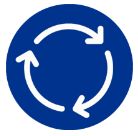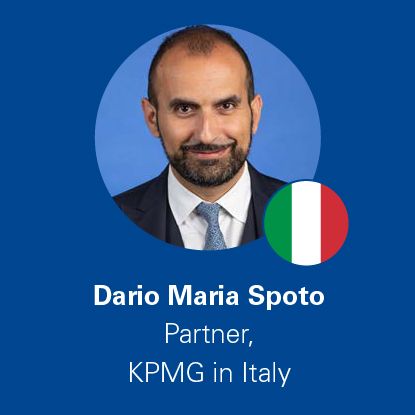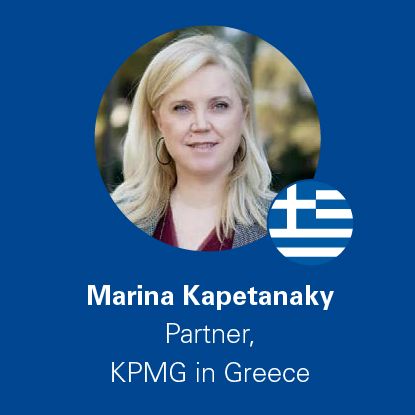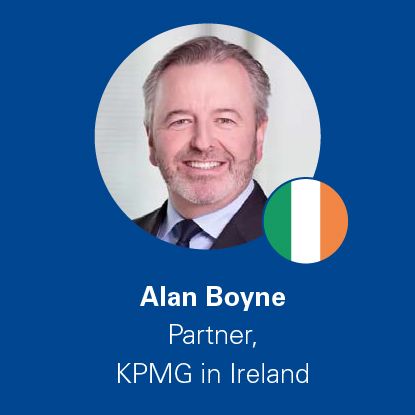How will deleveraging alter the European banking landscape?
In this report, we identify and discuss key topics of the European bank deleveraging landscape that we believe will take central stage in 2021. We also look back at how Europe’s loan-sale markets performed in 2020.
KPMG’s Portfolio Solutions Group are among the leading advisors in Europe’s loan sale and bank deleveraging marketplace. We are confident that the strength and depth of KPMG firms transaction experience across Europe is demonstrated in this report and we look forward to sharing our knowledge and insights with you.
For country perspectives, read quotes and individual reports from Global leaders.
Key trends in the market

New NPE disposals are coming
Relevant disposals are expected in sub-performing and bad loans markets, although it will be harder to see the jumbo deals that have occurred over the past years. Also, alternative investments will experience strong demand.

Strategic partnerships on NPE management
Many banks are building strategic partnerships for NPE management (from asset sale to structured credit), such as outsourcing the workout through a partnership with a specialized restructuring fund.

Southern Europe remains hot
NPE markets are still gaining from solid deleveraging activity (particularly in Portugal, Spain, Italy, Greece and Cyprus, also thanks to large securitizations) and relief support measures. Secondary market will be fueled in next few years.

M&A in the servicing market
Relevant investments expected in technology and human capital to avoid margins decreasing. M&A activities are expected in the coming periods to sustain the required investments.

Investors market is warming
High returns on investments and an active market expected in the coming years will lead to an increased investor appetite.

Credit risk and NPEs top supervisors' agenda
Increased supervisory pressures expected in 2021-2022 to avoid a new build-up of distressed exposures on bank balance sheets. Likely leading banks to further deleverage NPEs, especially for those burdened with legacy stock.
Regulatory environment for credit risk in 2021
Supervisory focus on vulnerable sectors of the economy
The bank's asset quality deterioration due to the Covid-19 pandemic remains one of the main concerns by supervisors for 2021, with credit risk at the top of the priority list. Banks remain vulnerable to adverse credit risk movements and some sectors most affected by the pandemic are already showing signs of asset quality deterioration. These are monitored very closely by the regulators.
Preventing a cliff effect from the moratoria loans
The ECB anticipates that forbearance, unlikely to pay, and defaults will inevitably increase as the benefits of measures implemented (such as payment moratoria and loan guarantees) begin to erode. The ECB remains focussed on minimizing cliff effects and containing accumulation of distressed exposures on a banks’ balance sheet.
NPE strategy and planning in a period of high uncertainty
Banks were requested to submit their NPE strategy and plan to the ECB by 31 March 2020. The ECB will challenge banks on the viability of execution considering the remaining uncertainties from the pandemic. This includes ensuring that banks have sufficient resources internally to adequately manage new flows of NPEs, but also that their divestment strategy is realistic and achievable.
Scrutiny on sufficient levels of banks’ provisioning
The ECB continues to assess the drivers of different approaches adopted by European banks in their provisioning choices. Provisioning models and policies should reflect the shocks from the pandemic. This includes ensuring timely and adequate provisioning and estimated credit loss (ECL). The ECB is also evaluating alignment with their supervisory coverage expectations for NPEs and the CRR provisioning backstop.
Pressures on banks to classify loans adequately
One of the critical findings identified by the ECB in 2020 was the inappropriate classification of debtors, including deficiencies with identifying default, NPEs or forbearance, and underestimation of gross exposures in stages 2 and 3 under IFRS9. In 2021, the supervisors are conducting in-depth analyses of the classification of assets to different stages under IFRS9.
The European Commission Action Plan on NPLs 2.0
The European Commission published on the 16 December 2020 its EU Action plan on NPLs 2.0, to tackle non-performing loans in the aftermath of the COVID-19 pandemic. In line with this updated action plan, diverse EU regulators are being tasked to implement individual actions in the course of 2021.
European debt sale report main topics
Although economic forecasts had pointed initially to a quick recovery, they turned bleaker as the pandemic evolved. The major European economies registered higher unemployment rates than initially forecasted, but the spike was temporarily curbed by government support packages introduced.
The EU regulators' response to the COVID-19 pandemic on credit risk has been through two main actions: the ECB letter to CEOs based on the supervisory expectations and the European NPL Action Plan 2.0.
Going forward, further pressure on capital and leverage ratios is expected. The effects of COVID-19 on banks’ asset quality were only partially visible at the time of this report, as defaults will presumably materialize at a later stage. This will likely lead to an increase in loans provisioning and a deterioration in the market capitalization.
2020 was a challenging year for the European loan sale market, with a deceleration in observed NPE transactions due to uncertainty among investors and servicers. This also lead to a decrease in observed prices. The pipeline is expected to pick up in 2021, with a significant increase in loan loss provisions by the European Banks, depending on asset type, financing conditions and jurisdiction.
Most Eurozone’s governments launched large programs of public loan guarantees, such as GACS and HAPS, to preserve access to bank loans for businesses (estimated to be about €2.1 trillion in state-guaranteed loans in the big four Eurozone countries, plus €1.3 trillion in “cheap” ECB loans).
Banks’ NPLs stocks in the main European countries are likely to grow in 2021 and 2022 according to KPMG forecasts, requiring banks to accelerate their deleveraging strategies and providing a boost to the transaction market.
Key market highlights

The Italian NPE market is one of the largest and most-mature markets in Europe both in terms of stocks and disposals. Last years were bumper years for portfolio sales, with more than EUR200 billion of non-performing loans (NPLs) sales transacted, largely driven by GaCS securitizations. While NPLs portfolios market (both primary and secondary), it is the UTPs portfolios that investors have started eyeing. When the shield of payment holidays and public support measures, we do expect an increase in the new flow of NPE. A further market consolidation will affect the servicing industry in the medium term.
See highlights from Italy ›

We expect an increasing volume of securitisations in the market, boosted by the HAPS tool, which is likely to be renewed for a further 12 months. Furthermore, the servicers market is expected to be very active, supported by a meaty carve-out trend, which could be a great perspective for small specialized local players, and for the opening of the secondary market. Finally, we do expect the COVID-19 effect in the market within Q2 and Q3 2021, with a new wave of NPLs.
See highlights from Greece ›

The Spanish market is very dynamic — we have seen most of the deals brought to market in 2020 closing before year-end. There is an opportunity for new investors as a new wave of NPLs is expected to increase activity in 2022, and large investors that entered in the market over the years will eventually consider selling part of their portfolios.
See highlights from Spain ›

Following a cooling-off period in Q1 2020, the deal market has slightly recovered. Expectations for the next period are for an increased number of deals in the market, leading to a discrete level of activity. Deal opportunities will come both from the NPEs and performing loan spaces. In addition, in the upcoming transactions we expect to see COVID-19 impacts on prices.
See highlights from Ireland ›

The economic downturn in 2020 and uncertainty on the economic recovery caused a deceleration of the NPL deleveraging process by Portuguese banks. Nevertheless, Q3 2020 and Q1 2021 show signs of recovery in transaction volumes. Portugal is one of the European countries with the highest percentage of loans in bank moratoria ending in Q3 2021, when it is expected to have a significant impact on the volume and profile of NPL market going forward.

Coming from various years of catch opportunity approaches, French banks are now moving toward large disposals. The market is expected to be quite active in 2021, with an interesting pipeline.
For details on the European financial market and its impacts on the NPE market, sign up and download the full report.
Get in touch
KPMG ECB Office
For more information on regulatory topics related to credit risks and NPEs, at the impacts on loans portfolio transactions, please contact Eric Cloutier, Partner, KPMG ECB Office


